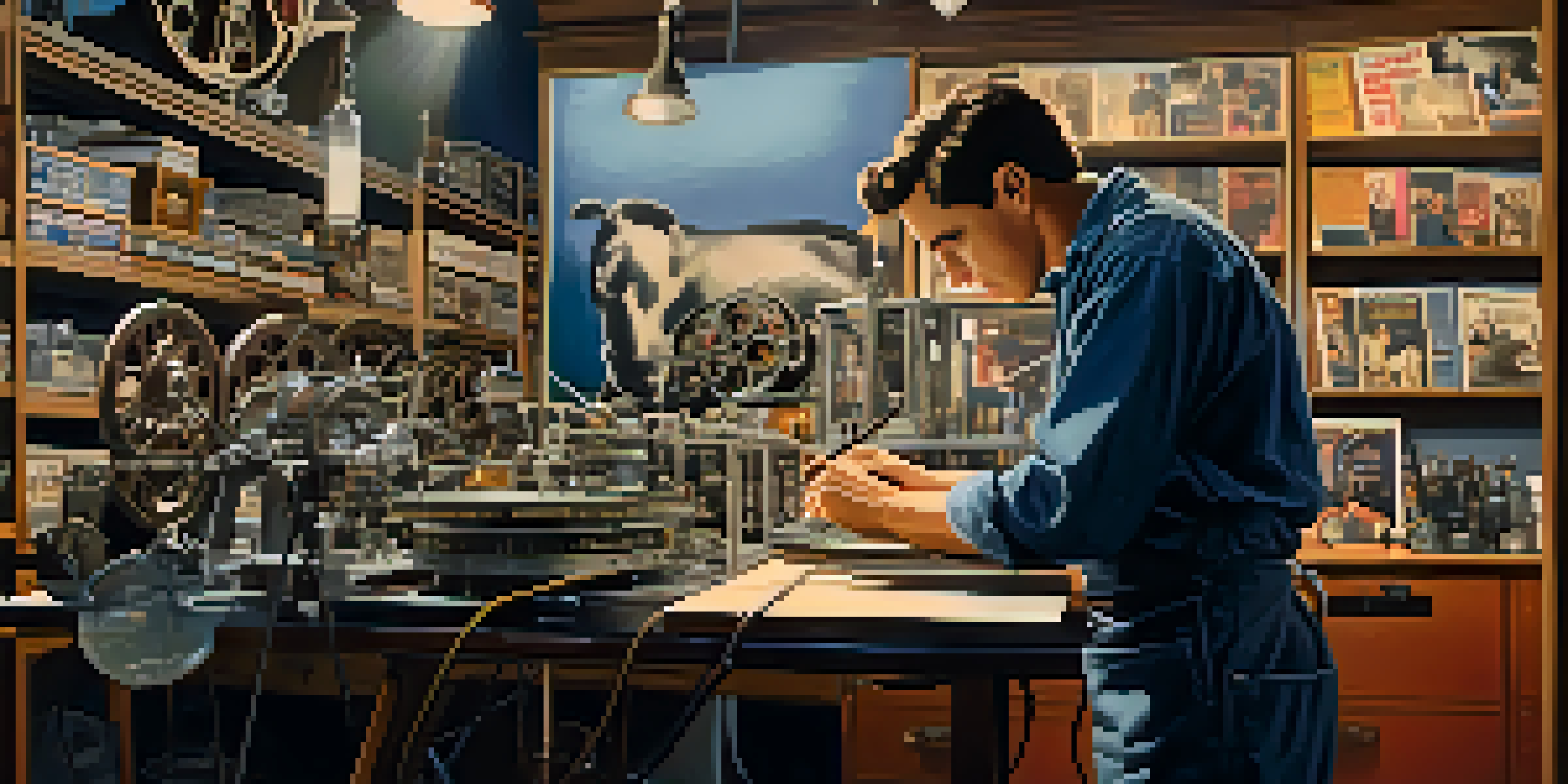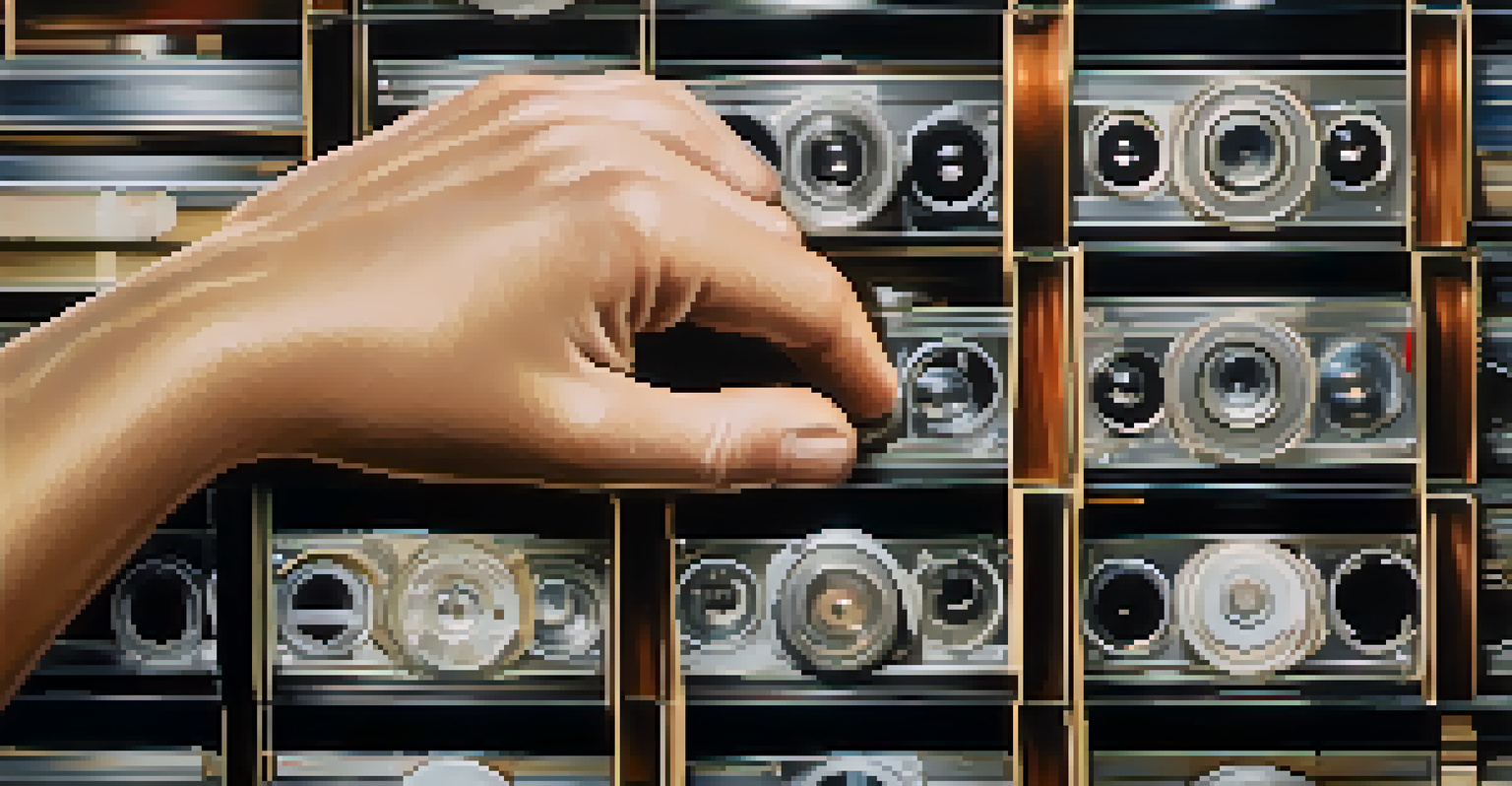Film Restoration vs. Preservation: Understanding the Difference

What is Film Restoration?
Film restoration is the process of repairing and reviving old films to bring them back to their original state or as close as possible. This can involve fixing damaged frames, correcting colors, and enhancing audio quality, ensuring that the film can be enjoyed as the creators intended. Imagine it like restoring a vintage car—every scratch and dent is meticulously worked on to revive its former glory.
Film is a very personal thing. It's not meant to be shared, but it is meant to be shared, and that's the paradox of film.
Restoration often requires advanced technology and skilled technicians who understand the art and science behind film. They may use digital tools to clean up imperfections, remove dust and scratches, and even recreate lost segments of the film. This process not only enhances the viewing experience but also helps preserve the cultural significance of the film for future generations.
Overall, restoration is about making a film accessible and enjoyable again, often for new audiences, while honoring its original craftsmanship. However, this process can sometimes lead to debates over how much alteration is acceptable, as purists may argue that any change compromises the film's authenticity.
What is Film Preservation?
Film preservation, on the other hand, focuses on maintaining the integrity of films over time. This involves storing films in optimal conditions to prevent deterioration and ensure their longevity. Think of preservation as putting your favorite book in a protective cover to keep it from wear and tear; it’s about safeguarding the film for future generations without altering its original state.

This process includes controlling temperature and humidity during storage, using archival-quality materials, and creating duplicate copies to mitigate risks of loss. Preservationists aim to keep the film’s original elements intact, allowing future restorations to be performed if necessary. The goal here is to ensure the film remains as a historical artifact, reflecting the time and culture in which it was made.
Film Restoration Revives Classics
Film restoration is a meticulous process that repairs and enhances old films to bring them back to life for modern audiences.
While restoration can make films look new again, preservation is about keeping the films safe and sound, allowing them to age gracefully. Both processes are crucial, but they serve different purposes in the lifecycle of a film.
The Importance of Both Practices
Both film restoration and preservation play vital roles in the world of cinema. Without restoration, many classic films would become unwatchable, lost to time and decay. Conversely, without preservation, the very films we seek to restore could deteriorate beyond repair, making them unavailable for future generations to appreciate.
Preservation is the key to the future of film, as it allows us to keep the past alive.
By working together, these practices ensure that films not only survive but thrive, allowing audiences to experience the rich tapestry of film history. Each restored film tells a story not just through its narrative but also through its journey of being saved and preserved. This dual approach allows us to appreciate films both as artistic creations and as historical documents.
Ultimately, both restoration and preservation are essential to the cultural heritage of film. They enable us to reflect on the past and understand how cinema has evolved, while also fostering a connection to the stories and experiences that shaped our collective history.
Technologies Used in Restoration
Modern film restoration employs a range of technologies that have revolutionized the field. Digital scanning can capture films at incredibly high resolutions, allowing for detailed corrections and enhancements. This technology is akin to using a high-definition camera to capture a stunning landscape, revealing intricacies that were previously invisible.
After scanning, advanced software tools are utilized to address issues like color fading, scratches, and sound distortions. These digital solutions can breathe new life into old films, making them visually and audibly engaging for today’s audiences. The expertise of technicians is crucial here, as they navigate the complexities of both the technology and the artistic vision of the original filmmakers.
Preservation Safeguards Film Heritage
Film preservation focuses on maintaining the integrity and longevity of films, ensuring they remain accessible for future generations.
These innovations ensure that even the most deteriorated films can be revitalized, preserving their legacy while making them accessible to a new generation. However, the challenge remains to balance technological interventions with the authenticity of the original work.
Challenges in Film Preservation
Film preservation is not without its challenges. One of the primary issues is the physical deterioration of film stock, which can be caused by factors like improper storage conditions, chemical breakdown, and the natural aging process. It's similar to how a beloved photo can fade over time if not kept in a proper album; without care, films can deteriorate beyond saving.
Additionally, the technology used to store and project films has evolved rapidly, leading to concerns about the obsolescence of older formats. For instance, many films originally shot on celluloid may struggle to find a platform for viewing in the digital age. Preservationists must continually adapt and find solutions to ensure these films remain accessible and relevant.
Despite these hurdles, dedicated organizations and individuals work tirelessly to combat these issues. Their commitment ensures that many films, which might otherwise be lost, can be preserved and enjoyed by future audiences.
The Role of Film Archives
Film archives are crucial players in both restoration and preservation efforts. These institutions serve as custodians of our cinematic heritage, safeguarding films from various eras and genres. Imagine a library, but instead of books, it houses films—each one a piece of history waiting to be revisited.
Many archives actively engage in restoration projects, utilizing their expertise and resources to bring neglected films back into the spotlight. They often collaborate with filmmakers, scholars, and restoration experts to ensure that films are not only preserved but also restored with respect to their original intent. This collaborative approach fosters a deeper understanding of the films and their cultural significance.
Collaboration Fuels Film Archives
Film archives play a crucial role in both restoring and preserving films while educating the public about their cultural significance.
In addition to restoration, archives play a pivotal role in educating the public about the importance of film history. Through screenings, exhibitions, and educational programs, they raise awareness about the value of preserving our cinematic past, creating a community of film enthusiasts who appreciate and advocate for these efforts.
The Future of Film Restoration and Preservation
As technology continues to advance, the future of film restoration and preservation looks promising. New methods, like artificial intelligence and machine learning, are beginning to play a significant role in both restoring damaged films and managing archival collections. It’s akin to having a personal assistant that can help organize and enhance your collection of memories—making the process faster and more efficient.
These innovations not only enhance the quality of restorations but also enable more films to be preserved, even those that may have been previously deemed too far gone. Furthermore, the growing interest in film history and culture among younger generations may lead to increased support for preservation efforts. This fresh enthusiasm can help rally resources and funding to ensure that these vital practices continue.

Ultimately, the future of film restoration and preservation will rely on a blend of technology, passion, and community engagement. As we move forward, it’s crucial to remember the importance of these practices in keeping our cinematic heritage alive for generations to come.